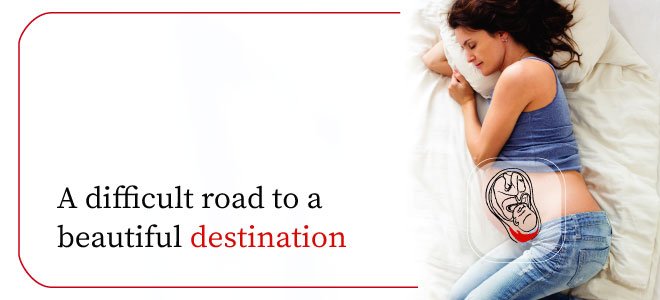The placenta is your baby’s main support system. It provides nourishment to your baby through the umbilical cord. It also filters the nutrients, oxygen, and waste your baby receives. For most women, the placenta attaches itself to the side of the womb but for some it attaches lower down and could cover a part or all of the cervix.
It is first seen in early ultrasound scans, during this time it is called a low lying placenta. In most cases, the placenta moves upwards as your baby grows. The placenta for some women, however, remains in the lower part of the uterus even after 20 weeks. This is condition is known as placenta praevia. It is observed in 1 of 200 pregnancies.
Why does Placenta Praevia happen?
Your placenta grows wherever the embryo has implanted itself in your uterus. If the embryo attaches itself to the lower part of your uterus, the placenta may grow in the lower part of your uterine wall or even over your cervix.
Initial placenta praevia usually resolves itself, that is if your placenta doesn’t completely cover your cervix. The situation gets complicated if the placenta is covering your cervix at any point in time. Read More

